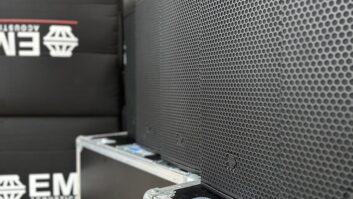
Why are the different audio networking protocols where they are today? Audio consultant Roland Hemming discusses some recent analysis.
As the audio industry increasingly uses networked audio, there is a never-ending debate over the merits of the different protocols that are available. Rather than throw more mud into the ring, RH Consulting has side-stepped these issues to look at the reasons why the different audio networking protocols are where they are today.
Based on our previous research into the number of licensees and products for each of the major protocols, we have released a white paper examining the current state of the audio networking market and trends among the various audio networking solutions. The independent report, titled The Death of Analogue and The Rise of Audio Networking, was commissioned by Audinate and takes a detailed look at the number of audio networking products available, the growth rate for various protocols, and the market forces affecting their adoption.
Our goal was to provide a deep dive from the overall market perspective. We analysed the products that are really shipping and the factors that are driving the growth, or lack thereof, of the various protocols.
When analysing the available products, some interesting trends emerge. First, the sheer number of networked products on the market has greatly accelerated in the past year, reaching over 700. Second, of the various protocols, Dante clearly has the most growth, adding 172 products in the last year. While CobraNet still has the most total number of products, it has lost momentum (we attribute the increase in CobraNet products in 2014 to more diligent counting rather than a surge of new products).
Beyond just market share data, this report explains the similarities between different emerging technologies both inside and outside of our industry. It explains how the adoption curve works for any new technology, how purchase decisions will differ and how standards come into play at different times as audio networking becomes more established. It also explains the difference between de jure and de facto standards and when and why each become successful.
The report notes that with most new technology, it is the end-to-end, complete solutions that tend to gain rapid adoption. The reasons for this are quite simple: there is a company that is responsible for making sure everything works, and is there to support it. We believe that this is true for audio networking as well. Over time networking has become less about specifying a protocol and more about specifying products that work together.
There is evidence that this explosive growth is starting to happen in audio networking. Based on the growing number of Dante licensees (currently over 200) and the number of available products, we were able to predict at least a 130% growth in the number of Dante-equipped products over the next two years.
Despite this growth, the paper lays out what it will take for true mass adoption of audio networking. In the raging debate about standards, it highlights that the real competition is still analogue. The biggest challenge for digital audio networking is to get people to use it over conventional analogue connections.
History has shown us that when a digital technology is no more than 20% more expensive than its analogue equivalent, the latter dies. While audio networking is not to that point yet, the rapid growth we are seeing now would indicate that analogue’s days are numbered.
In a future article we will try to see where the industry is on the audio networking adoption curve and to add our readers’ insight into where the industry is going.
The complete white paper can be downloaded at www.audinate.com/rise-of-audio-networking
Data on networked audio products can be found by downloading the RH Consulting app.







